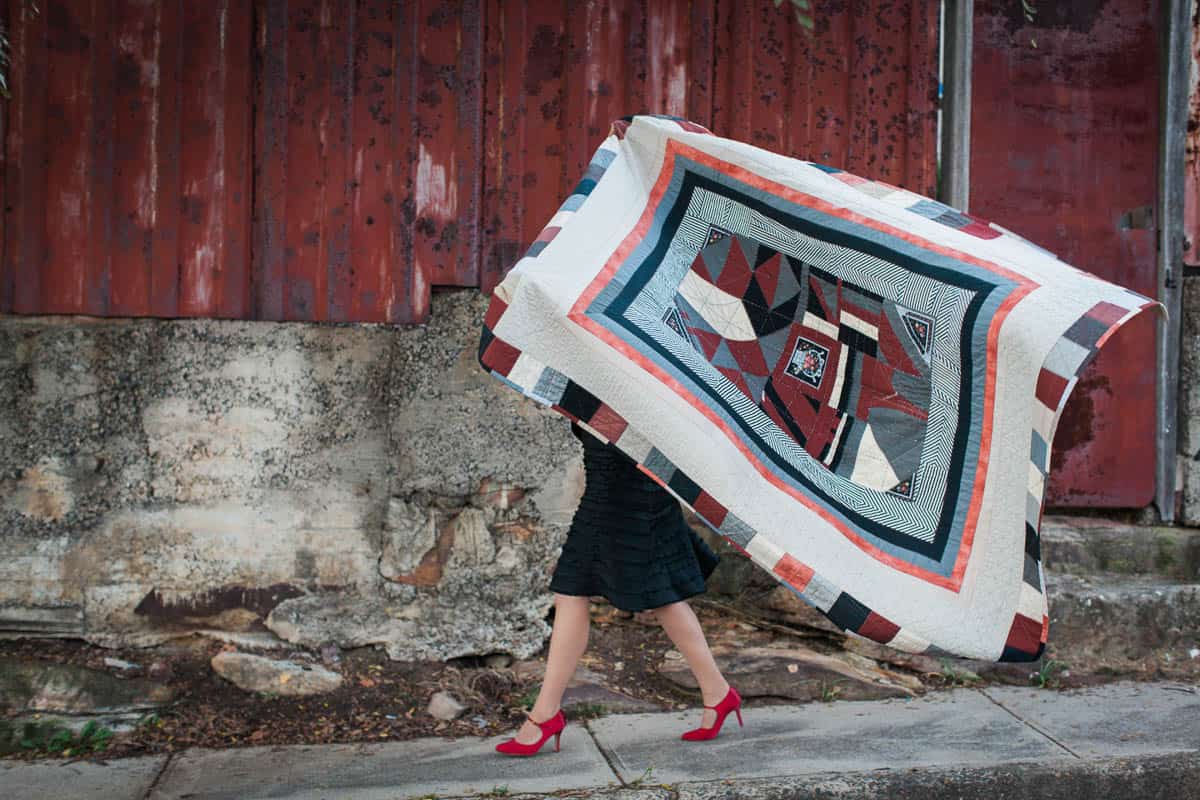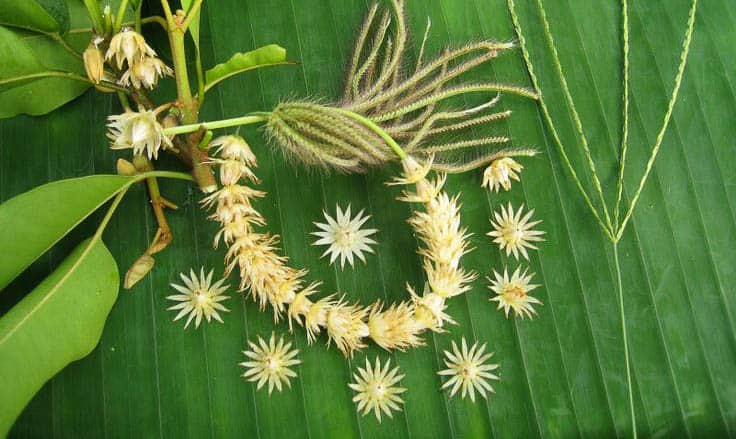 The Indonesian nation was founded on the five principles of Pancasila: divinity, humanism, nationalism, democracy and social justice. In 1945, the Indonesian President Sukarno reduced these to the fundamental principle of gotong royong, or mutual cooperation. This is the official story of values Indonesia presents to the world.
The Indonesian nation was founded on the five principles of Pancasila: divinity, humanism, nationalism, democracy and social justice. In 1945, the Indonesian President Sukarno reduced these to the fundamental principle of gotong royong, or mutual cooperation. This is the official story of values Indonesia presents to the world.
This issue of Garland is a kind of “gotong royong”. We’ve been advised by a dedicated team of young Indonesians who are keen to see this value updated to the country of today, 72 years later. The textile designer, Frans Pandjaitan sees this concept as more relevant to agricultural communities, where members of the kampung (“village”) come together to sow seeds or harvest. For urban dwellers like himself, it is more limited to big social events like weddings or funerals. For product designer Nadia Pramudita, this spirit still pervades much social life, such as the ngariung shared meal that is part of Sundanese culture and is now a fashionable kind of gathering in Jakarta. As a more familiar version of the sentiment of cooperation, Nadia suggested the phrase rame rame, which is typically said to rouse a group of people to action.
Rame rame is a contribution to the ongoing exploration of the value of creative practice in the broader Indo-Pacific. With the quarterly essay by Rob Finlayson about Rodney Glick, we visit Bali, where many Westerners have been travelling not only for holidays, but also to work with the many skilled artisans. In Ubud, Glick has established a unique practice that combines not only a series of Hindu-inspired sculptures, but also a chain of cafes, filled with his designs for furniture and eating. With a keen ear for the conversations around Glick, Finlayson conveys the easeful flow of sociability that grounds his work.
We’re lucky as well to have an explanation by Mas Ruscita of the very material form of spirituality that underpins this Balinese attitude to the world. The Balinese cooperative Ketemu extends this into the social realm with a Schizo-friends project, realised in a yoga park. To the north of the island, Gede Kresna’s Rumah Intaran revives Balinese crafts, trades and recipes for local inspiration. And Marty Hope’s Elephant Shark represents an attempt to restore an image of Bali in the “old days”, before it became so commodified.
Collaboration is a key theme. Annie Gobel’s Complete Me jewellery project takes rame rame to Melbourne. Nuraini Juliastuti offers an Indonesian take on Tom Nicholson’s collaboration with diorama artisans in Yogyakarta. The artist Rosslynd Piggott writes about the value of her partnership with Venetian glass makers. Lisa Waup and Sarah Weston present their collaboration of Indigenous design and fashion. And the next instalment in the Stringlines series on fibre art tells the remarkable story of mentorship between a Sumatran datu spirit man and a newly lauded Indigenous artist, Jenny Crompton. Indonesia seems to have embraced social media and it is worth learning how they have adapted it to their values. During the course of this issue, we will be exploring the potential of Instagram as a platform for working together.
There’s much to learn about Indonesia itself. William Ingram and Jean Howe articulate the philosophy of Threads of Life through a visit to a traditional weaving community in Flores. Fauzy Prasetya shares his thoughts on what it takes to set up a ceramics studio today. Two articles are about the Dayak culture of Kalimantan: Karen Macdonald takes us to a Dayak wedding ceremony and Stephanie Brookes looks at the fibre craft that holds a village together. Marian Reid and Emily Lush discuss the iconic craft of Timor-Leste, tais weaving.
As always, we discover strong cross-cultural dialogues. Carla van Lunn writes about a fashion exchange between Australia and Indonesia, while Elizabeth Shaw reflects on a parallel jewellery exchange. Alexandra Crosby introduces us to some current thinking around design from Surabaya.
As well, there’s a roundup of stories from across the region. We hear from Lisa Cahill on Charlotte Haywood, Mark Stiles on Helen Wyatt, Elliat Rich on her design interpretation of central Australian landscape, Renate Mellão on the Brazilian embroidered house, Madeleine Kelly on an exhibition by Mexican artist, Claudia Fernandez, and a series on Japanese ceramics artists by Shoko Ono, Yoshika Yajima, Naho Yamashita and Tomoko Kawakami.
One of the goals of each issue is to find ways of connecting people together. We’ve been very lucky to have excellent advice from Frans Pandjaitan, Nadia Pramudita, Annie Gobel, Grace Samboh and Anisa Fardan Nabila. We hope they will help us continue to provide an Indonesian voice as Garland travels to other parts of our world.
To see the complete list of contents, go here.

